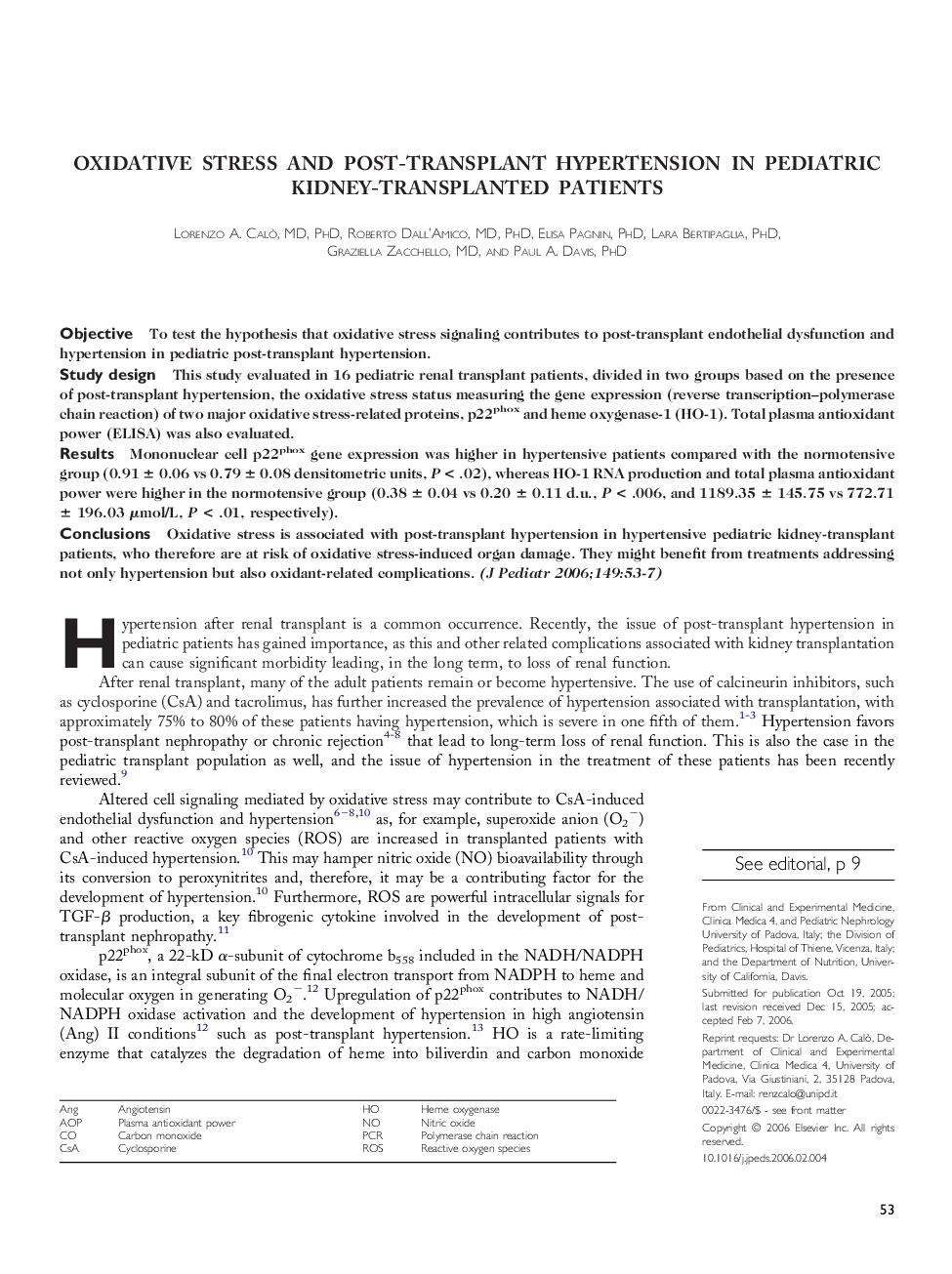| کد مقاله | کد نشریه | سال انتشار | مقاله انگلیسی | نسخه تمام متن |
|---|---|---|---|---|
| 4169239 | 1607560 | 2006 | 5 صفحه PDF | دانلود رایگان |

ObjectiveTo test the hypothesis that oxidative stress signaling contributes to post-transplant endothelial dysfunction and hypertension in pediatric post-transplant hypertension.Study designThis study evaluated in 16 pediatric renal transplant patients, divided in two groups based on the presence of post-transplant hypertension, the oxidative stress status measuring the gene expression (reverse transcription–polymerase chain reaction) of two major oxidative stress-related proteins, p22phox and heme oxygenase-1 (HO-1). Total plasma antioxidant power (ELISA) was also evaluated.ResultsMononuclear cell p22phox gene expression was higher in hypertensive patients compared with the normotensive group (0.91 ± 0.06 vs 0.79 ± 0.08 densitometric units, P < .02), whereas HO-1 RNA production and total plasma antioxidant power were higher in the normotensive group (0.38 ± 0.04 vs 0.20 ± 0.11 d.u., P < .006, and 1189.35 ± 145.75 vs 772.71 ± 196.03 μmol/L, P < .01, respectively).ConclusionsOxidative stress is associated with post-transplant hypertension in hypertensive pediatric kidney-transplant patients, who therefore are at risk of oxidative stress-induced organ damage. They might benefit from treatments addressing not only hypertension but also oxidant-related complications.
Journal: The Journal of Pediatrics - Volume 149, Issue 1, July 2006, Pages 53–57